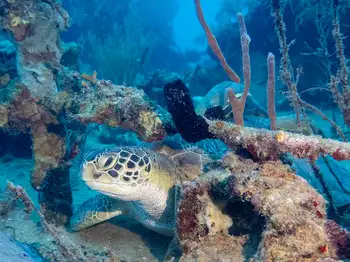Taxonomy
Animalia
Chordata
Reptilia
Testudines Cheloniidae
Turtle Tortoise Creeping-things Chord-possessing Life-possessing-beings
Turtles are reptiles of the order Chelonia or Testudines. They are characterized by a special bony or cartilaginous shell developed from their ribs that acts as a shield. Colloquially, the word "turtle" is generally restricted to fresh-water and sea-dwelling Testudines. Testudines includes both extant (living) and extinct species. Its earliest known members date from the Middle Jurassic. Turtles are one of the oldest reptile groups, more ancient than snakes or crocodilians. Of the 360 known extant species, some are highly endangered. Turtles are ectotherms—commonly called cold-blooded—meaning that their internal temperature varies according to the ambient environment. However, because of their high metabolic rate, leatherback sea turtles have a body temperature that is noticeably higher than that of the surrounding water. Turtles are classified as amniotes, along with other reptiles, birds, and mammals. Like other amniotes, turtles breathe air and do not lay eggs underwater, although many species live in or around water.
Testudines. Retrieved May, 08 2021, from en.wikipedia.org/wiki/Turtle.
Cheloniidae is a family of typically large marine turtles that are characterised by their common traits such as, having a flat streamlined wide and rounded shell and almost paddle-like flippers for their forelimbs. The six species that make up this family are: the green sea turtle, loggerhead sea turtle, olive ridley sea turtle, hawksbill sea turtle, flatback sea turtle and the Kemp's ridley sea turtle.
Cheloniidae. Retrieved May, 08 2021, from en.wikipedia.org/wiki/Cheloniidae.

